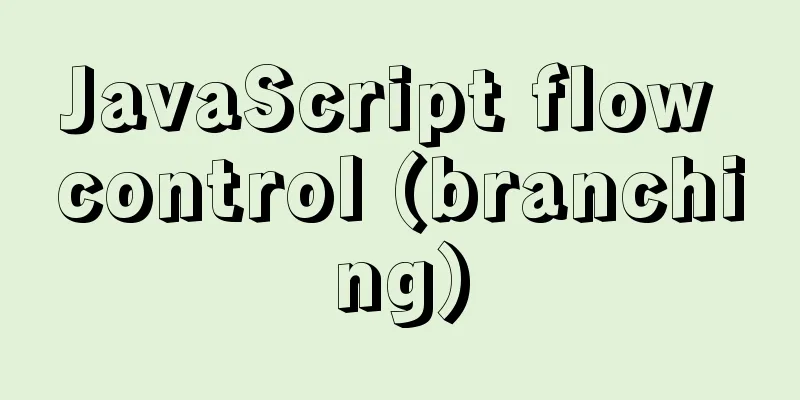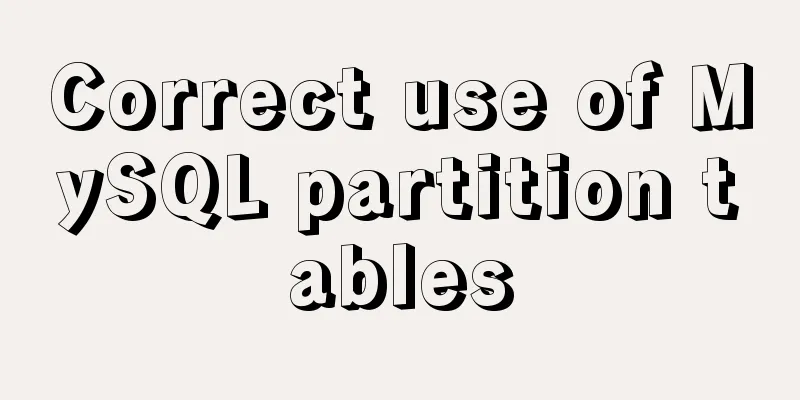JavaScript flow control (branching)

1. Process ControlThere are three main structures for process control:
These three structures represent three orders of code execution.
2. Sequential Process ControlThe sequential structure is the simplest and most basic flow control in a program. It has no specific grammatical structure. The program will be executed in the order of the code. Most of the code in the program is executed in this way. 3. Branch flow control if statement1. Branch structureIn the process of executing the code from top to bottom, different path codes are executed according to different conditions (the process of selecting multiple execution codes), thus obtaining different results. 2. if statement
// Execute code if the condition is met, otherwise do nothing if (conditional expression) {
// Code statements executed when the condition is met}The execution process is:
var age = prompt('Please enter your age:');
if(age > 18) {
alert('Your age is legal, please enter!');
}When the input value is greater than or equal to 18, the following pop-up window appears:
3. if else statement (double branch statement)Grammatical structure:
// If the condition is met, execute the code in if, otherwise execute the code in else if (conditional expression) {
// [if] the condition is met, execute the code } else {
// [otherwise] code to execute}
Execution process:
For example, write a case to check whether it is a leap year or not. Receive the year input by the user. If it is a leap year, a pop-up window will pop up indicating the leap year. Otherwise, a pop-up window will pop up indicating a common year.
var year = prompt('Please enter the year to be judged:');
if(year%400 == 0 || year % 4 == 0 && year / 100 != 0) {
alert('This year is a leap year!');
}else{
alert('This year is an average year!');
}
When entering 2004:
When entering 2005, the following popup appears:
4. if else if statement (multi-branch statement)Grammatical structure:
// Suitable for checking multiple conditions.
if (conditional expression 1) {
Statement 1;
} else if (conditional expression 2) {
Statement 2;
} else if (conditional expression 3) {
Statement 3;
....
} else {
// If the above conditions are not met, execute the code here}
Execution process:
Case Study: According to the idea of judging from large to small, a
var score = prompt('Please enter your score:');
if (score >= 90) {
alert('A');
} else if (score >= 80) {
alert('B');
} else if (score >= 70) {
alert('C');
} else if (score >= 60) {
alert('D');
} else {
alert('E');
}
When you enter the corresponding score, the corresponding level will pop up. 4. Ternary ExpressionTernary expressions can also do some simple conditional selection. An expression consisting of a ternary operator is called a ternary expression. expression1 ? expression2 : expression3; Implementation ideas: If expression 1 is true, then the value of expression 2 is returned. If expression 1 is false, then the value of expression 3 is returned. Simply put: It is similar to the shorthand of if else (double branch)
var num = prompt('Please enter a number between 0 and 59');
var result = num < 10 ? '0' + num : num;
alert(result);
When the input is 2, the operation of adding 0 is performed:
When 10 is entered, the result is printed directly:
5. Branch flow control switch statement1. Grammatical structure The Grammatical structure:
switch(expression){
case value1:
// Code to be executed when expression is equal to value1 break;
case value2:
// Code to be executed when expression is equal to value2 break;
default:
// Code to be executed when the expression is not equal to any value}
For example, if you enter a case of querying grades, the requirements are the same as the if-else-if statement above.
var s = prompt('Please enter your score:');
var n = parseInt(s/10);
var k = null;
switch(n){
case 10: {
k = 'A';
break;
}
case 9:
k = 'B';
break;
}
case 8:
k = 'C';
break;
}
case 7:
k = 'D';
break;
}
default: k = 'E';
}
console.log('Your grade is: '+k);
When the input is 100 points, the output is:
When the input is 73 points, the output is:
2. The difference between switch statement and if else if statement
This is the end of this article about JavaScript flow control (branching). For more relevant JavaScript flow control content, please search 123WORDPRESS.COM's previous articles or continue to browse the following related articles. I hope everyone will support 123WORDPRESS.COM in the future! You may also be interested in:
|
<<: Share 5 helpful CSS selectors to enrich your CSS experience
>>: Detailed process of zabbix monitoring process and port through agent
Recommend
Detailed explanation of Vue's live broadcast function
Recently, the company happened to be doing live b...
Detailed explanation on how to modify the default port of nginx
First find out where the configuration file is wh...
Detailed process of installing the docker plugin in IntelliJ IDEA (2018 version)
Table of contents 1. Development Environment 2. I...
Beginners learn some HTML tags (2)
Beginners can learn HTML by understanding some HT...
How to implement h5 input box prompt + normal text box prompt
XML/HTML CodeCopy content to clipboard < input...
Steps to install Pyenv under Deepin
Preface In the past, I always switched Python ver...
Summary of CSS sibling element floating analysis
float:left/right/none; 1. Same level floating (1)...
HTML page adaptive width table
In the pages of WEB applications, tables are ofte...
Docker nginx implements one host to deploy multiple sites
The virtual machine I rented from a certain site ...
Detailed graphic tutorial on downloading and installing VirtualBox software and installing and deploying it in Linux environment
1. Download and install VirtualBox software First...
MySQL Community Server 8.0.12 installation and configuration method graphic tutorial
MySQL 8 brings a brand new experience, such as su...
A practical record of restoring a MySQL Slave library
Description of the situation: Today, I logged int...
Detailed explanation of MySQL index principles and optimization
Preface This article was written by a big shot fr...
Thirty HTML coding guidelines for beginners
1. Always close HTML tags In the source code of p...
Example code for implementing hollowing effect with CSS
Effect principle Mainly use CSS gradient to achie...



















